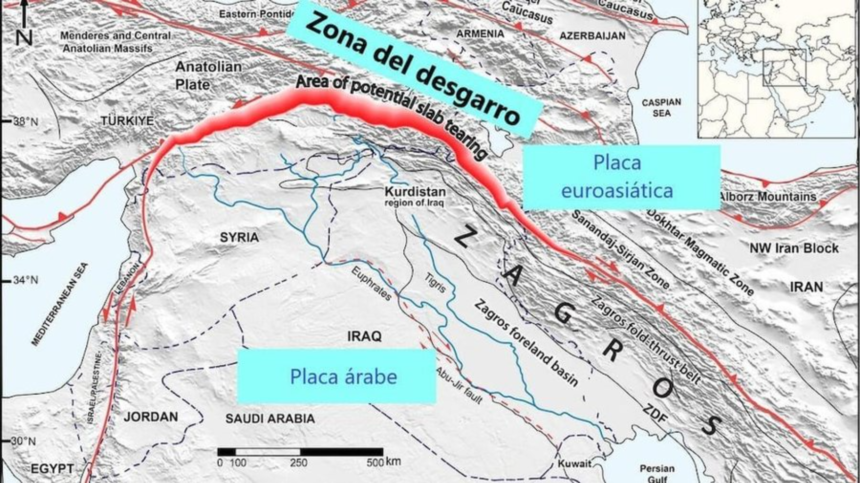Scientists have precisely identified a massive crack beneath the Earth’s surface, forming between the Arabian-African plate and the Eurasian plate. Led by geologist Renas Koshnaw from MIT and the University of Miami, researchers have confirmed that this crack is connected to the disappearance of an ancient ocean – the Neotethys Ocean – which once separated the supercontinents Gondwana and Laurasia.
For millions of years, the remnants of this oceanic plate have sunk into the Earth’s mantle. However, new seismic data and advanced geodynamic models show that the plate is cracking apart. The damaged area begins in the southeast of Turkey and extends toward northern Iraq and the Zagros mountain range.
“This is like an old wound reopening,” says Koshnaw. The oceanic part of the plate is collapsing into the Earth’s mantle, creating lateral tensions that could alter the tectonic balance in the region.
Experts warn that this phenomenon could significantly affect the frequency and intensity of earthquakes, according to A2 CNN. The surrounding regions – Turkey, Iraq, and Iran – are already located in a seismically active zone. If the crack continues to widen, it may trigger new fractures and redistribute the accumulated energy within the Earth’s interior.
Professor Jean-Philippe Avouac from Caltech warns that “in the coming centuries, we may experience stronger earthquakes in this region.”
As the crack continues to spread, a new microplate could form between Arabia and Anatolia, potentially altering the Earth’s tectonic map in the distant future.







